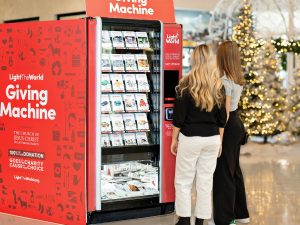Being Prepared
In preparation for Hurricane Katrina, the Army staged personnel and equipment in the states adjacent to the primary strike zone. Specifically, we:
- Loaded meals on 72 mobile canteens, each capable of providing 5,000 hot meals per day, and two 54-footmobile kitchens, each capable of providing 20,000 hot meals per day.
- Mobilized 200 officers, employees and volunteers to operate these mobile kitchens.
- Prepared to dispatch portable shower units, trucks transformed into 1-stop shops called comfort stations, and emergency response command stations.
Delivering Life-Sustaining Commodities
The Army moved its mobile feeding units into New Orleans, Biloxi, Gulfport, Mobile and other affected communities within hours after the storm had passed. In some areas, the Army presented the first opportunity for survivors to obtain food and water.
As the scope and scale of the damage became apparent, the Army deployed additional resources to the region:
- The number of mobile canteens rose from 72 to 178.
- The number of field kitchens deployed rose from 2 to 11.
Since Katrina struck, The Salvation Army has served more than 5 million hot meals and more than 7 million sandwiches and snacks to survivors and first responders.
The Army has also distributed more than 150,000 cleaning kits and almost 200,000 boxes of groceries.
Shelter
Although sheltering disaster victims is not a primary activity, at the height of the initial response, the Army was operating 225 shelters housing more than 31,000 people.
Emotional and Spiritual Care
The Salvation Army provides emotional and spiritual comfort to disaster victims and emergency workers coping with the stress of a disaster.
In the aftermath of the Gulf Coast hurricanes, The Salvation Army has provided services to more than 1.2 million people in 30 different states.











